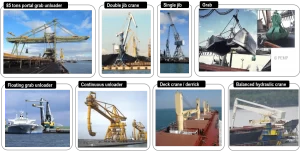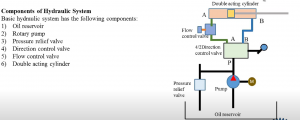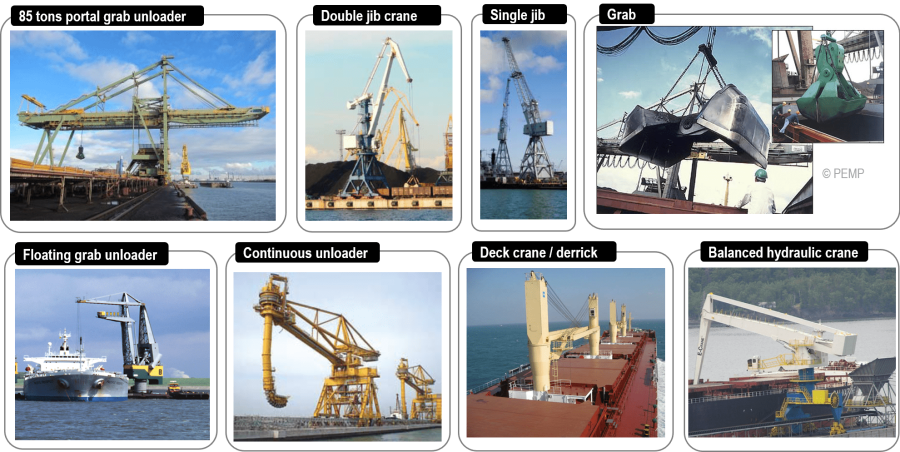In this short course article, we will explore the world of hydraulic port cranes, a key component in maritime operations. We will cover the basic principles, main components, and operational procedures of these essential pieces of equipment. This article is based on information from reputable sources, such as crane manufacturers, technical journals, and educational books.

Basic Principles of Hydraulic Port Cranes
Hydraulic port cranes are indispensable for efficient cargo handling at ports and harbors. They use the power of fluid mechanics to generate force and motion. The hydraulic system works by transmitting power through a liquid medium, typically hydraulic oil. This allows the crane to generate precise and powerful movements, enabling them to lift heavy loads.
Main Components of Hydraulic Port Cranes: In-Depth Analysis
Boom:
The boom is the primary lifting component of a hydraulic port crane, responsible for reaching out and lifting loads. Booms come in two primary types:
- Telescopic Boom: This type of boom features multiple sections that can slide in and out of each other, allowing for adjustable length. This design enables the crane to reach various distances and heights, making it versatile for different lifting tasks.
- Fixed Boom: This type of boom has a fixed length and is unable to extend or retract. Fixed booms are typically found on smaller cranes or in applications where a predetermined reach is sufficient.
Hydraulic Cylinders:
Hydraulic cylinders play a crucial role in generating the force needed for lifting and moving the boom. They consist of a cylindrical barrel, a piston, and piston rods. When hydraulic fluid enters the cylinder, it pushes the piston, which in turn moves the piston rod, creating linear motion. This mechanical energy is what enables the crane to perform its lifting operations.
Hydraulic Pumps:
Hydraulic pumps are responsible for generating the flow of hydraulic fluid through the system. They come in various types, including gear pumps, vane pumps, and piston pumps. The selection of a hydraulic pump depends on factors such as the required pressure, flow rate, and system efficiency. The pump is driven by an electric motor or an internal combustion engine, which provides the necessary power to pressurize the hydraulic fluid.
Control Valves:
Control valves play a pivotal role in regulating the flow of hydraulic fluid, enabling precise control of the crane’s movements. They can be manually operated, or in more advanced systems, electronically controlled. Some common types of control valves found in hydraulic port cranes include:
- Directional Control Valves: These valves control the flow direction of the hydraulic fluid, allowing operators to manipulate the crane’s movements.
- Pressure Control Valves: These valves maintain the hydraulic system’s pressure within a specified range, ensuring safe and efficient operation.
- Flow Control Valves: These valves regulate the flow rate of the hydraulic fluid, allowing for smooth and controlled movement of the crane.
Reservoir:
The reservoir is a container that stores the hydraulic fluid, ensuring a continuous supply to the system. In addition to storage, the reservoir also serves to dissipate heat, separate air from the fluid, and remove contaminants. Maintaining proper fluid levels and cleanliness in the reservoir is essential for the efficient functioning of the hydraulic system.
Outriggers:
Outriggers are extendable legs that provide stability to the crane during operation. They are crucial for maintaining balance and preventing the crane from tipping over, especially when lifting heavy loads. To ensure maximum stability, operators must extend the outriggers according to the manufacturer’s instructions and ensure they are firmly positioned on a level surface. In some cases, additional supports or mats may be used to distribute the load more evenly across the ground.

Operational Procedures: In-Depth Analysis
Pre-operation Inspection: Before operating a hydraulic port crane, conduct a thorough inspection to ensure safety and efficiency. The inspection should cover the following areas:
- Structural components: Examine the boom, outriggers, and frame for any signs of damage, such as cracks, deformation, or corrosion.
- Hydraulic system: Check for leaks, damaged hoses, or loose connections. Make sure the hydraulic fluid is at the correct level and free of contaminants.
- Electrical system: Inspect cables, connections, and switches for wear or damage. Verify that all safety devices, such as warning lights and alarms, are functioning correctly.
- Mechanical components: Check winches, hooks, and wire ropes for wear, damage, or proper lubrication.
Set-up: Follow these steps to set up the hydraulic port crane for operation:
- Position the crane on a level and stable surface, ensuring there are no underground hazards, such as utilities or unstable ground.
- Extend the outriggers according to the manufacturer’s instructions, making sure they are fully deployed and in contact with the ground.
- Align the boom with the intended lifting path, ensuring it is clear of any obstructions, such as power lines or structures.
Load Calculation: Determining the weight of the load and verifying it is within the crane’s lifting capacity is critical for safe operation. To do this:
- Weigh the load or obtain its weight from shipping documentation.
- Consult the crane’s load chart, which indicates the lifting capacity at various boom lengths and angles.
- Verify that the load’s weight is within the crane’s capacity for the intended lift, considering factors such as boom angle, extension, and radius.
Operation: During crane operation, adhere to the following guidelines:
- Operate the control levers smoothly, avoiding abrupt or jerky movements that could destabilize the crane or cause the load to swing.
- Use proper hand signals or radio communication to coordinate with other personnel on site, ensuring everyone is aware of the crane’s movements and intentions.
- Monitor the crane’s operational parameters, such as load weight, boom angle, and radius, to avoid exceeding its limits.
- Follow safe lifting practices, such as maintaining a clear line of sight, keeping the load as low as possible, and never lifting over people or vehicles.
Shutdown: Once the lifting operation is complete, follow these shutdown procedures:
- Carefully retract the boom and outriggers, ensuring they are properly stowed and secured.
- Turn off the crane’s engine and disconnect any electrical connections or hydraulic lines, as needed.
- Perform a post-operation inspection, checking for any new signs of wear or damage that may have occurred during operation.
- Secure the crane, including locking any access points or control panels, to prevent unauthorized access or tampering.
Conclusion
Hydraulic port cranes are essential for efficient cargo handling at ports and harbors. Understanding their basic principles, main components, and operational procedures is crucial for safe and effective use. By following proper safety guidelines and manufacturer recommendations, you can ensure the longevity and reliability of these indispensable machines.
Continue your maritime education journey by exploring other topics on MaritimEducation.com. Happy learning!

